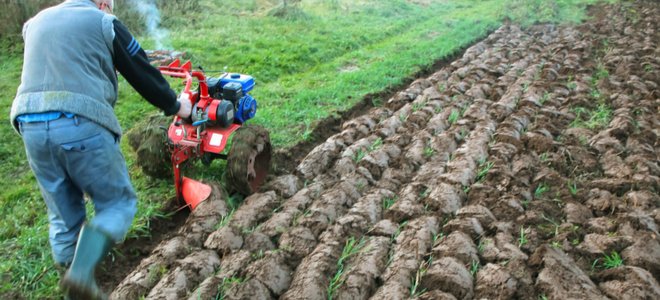 1 hours • Beginner • 250-2,000
1 hours • Beginner • 250-2,000
Rototillers beat the socks off manual tools every time. It doesn’t take much thought to realize controlling a power-digging machine will offer its weight in gold compared to any task approached with a shovel, spade, or ox and cart (is that still a thing?). But how do you know which model to choose for your garden or landscaping project? Let’s till right into the topic.
Rent, Borrow, or Buy?
Power equipment isn’t cheap so it’s worth evaluating whether you actually need to buy one. The smallest model will run you around $250 while a more comprehensive unit could cost $2,000. When it comes to rototillers, you get what you pay for as far as ease of use and efficiency.
Another alternative is simply to borrow one from a friend, neighbor, or co-worker. If you don’t know an owner or aren’t sure your friendship will survive the loan, look into renting one instead. It might cost you $100-200 for a big unit if you can get the job done in a 24-hour period. Some areas cost less, some might be more.
The main consideration is how often you’ll use the rototiller. If your goal is merely to reseed the front lawn, a rental may be for you. If you choose to rototill a large garden space every year or two, purchasing a unit might be a better plan.
Factors to Consider
When deciding on the perfect rototiller for you, think about the size of the space as well as the type of soil you’re dealing with. You may have a small space with highly rocky and compacted soil, or an expansive area with relatively soft soil.
Also consider the amount of assistance you’re looking for. Rototillers are exponentially easier than manual tilling, but they are still physically challenging to handle and maneuver so be real about your abilities. The extra features and power will nearly always make the job easier. As we said, you get what you pay for.

Understand Pros and Cons of Three Main Types
Start an internet search and you might shut down from information overload. There are so many styles of rototillers to choose from. However, if you begin with a basic understanding of the three main types of rototillers, making a decision about one becomes a lot easier.
Mini-tillers or Cultivators
These are the small, easy-to-handle models you can likely carry with one hand. They’ve got a few claws to do the digging, but don’t offer a lot of depth. We’re, of course, not talking about personality or content. We’re talking about how much soil it will lift and churn.

Mini-tillers basically take off one layer per pass. Each time you work over the same spot, it will mix it up a bit more. However, mini-tillers often require several passes and don’t do well in highly-compacted or rocky soil, sometimes doing little more than bouncing across the surface.
They will do a sufficient job in a small garden with forgiving soil, but basically mini-tillers are a step up from a sharp shovel and a good pair of boots. Sometimes they’re electric and sometimes gas-powered.
Mid-size Front-tine Tillers
Mid-size tillers are easy to distinguish from mini-tillers, strictly by size in nearly every aspect. The machine is bigger, the tines are bigger, the width is bigger, etc. Front-tine machines work from the front of the machine. They’ve got some power and are useful even on compacted or rocky soils. They require a bit of focus and brawn to keep in line, but are pretty easy to handle during use. They will certainly do the job in a faster fashion than a mini-model.
Large Rear-tine Tillers

These are the big boys. They get the job done efficiently and with minimal effort. Expect a gas-powered engine and large footprint in the storage area of your shed or garage. These machines are more difficult to handle, especially when making turns, so they are best for large, open spaces. For that use, however, they will chew through the worst soil conditions in record time.
The decision to select one type of rototiller over another really comes down to your personal needs. One pointer about trying to garden in undesirable soil conditions. Do yourself a favor–skip the rototiller altogether and build raised garden beds instead.
Source link : https://www.doityourself.com/stry/how-to-pick-the-right-rototiller












